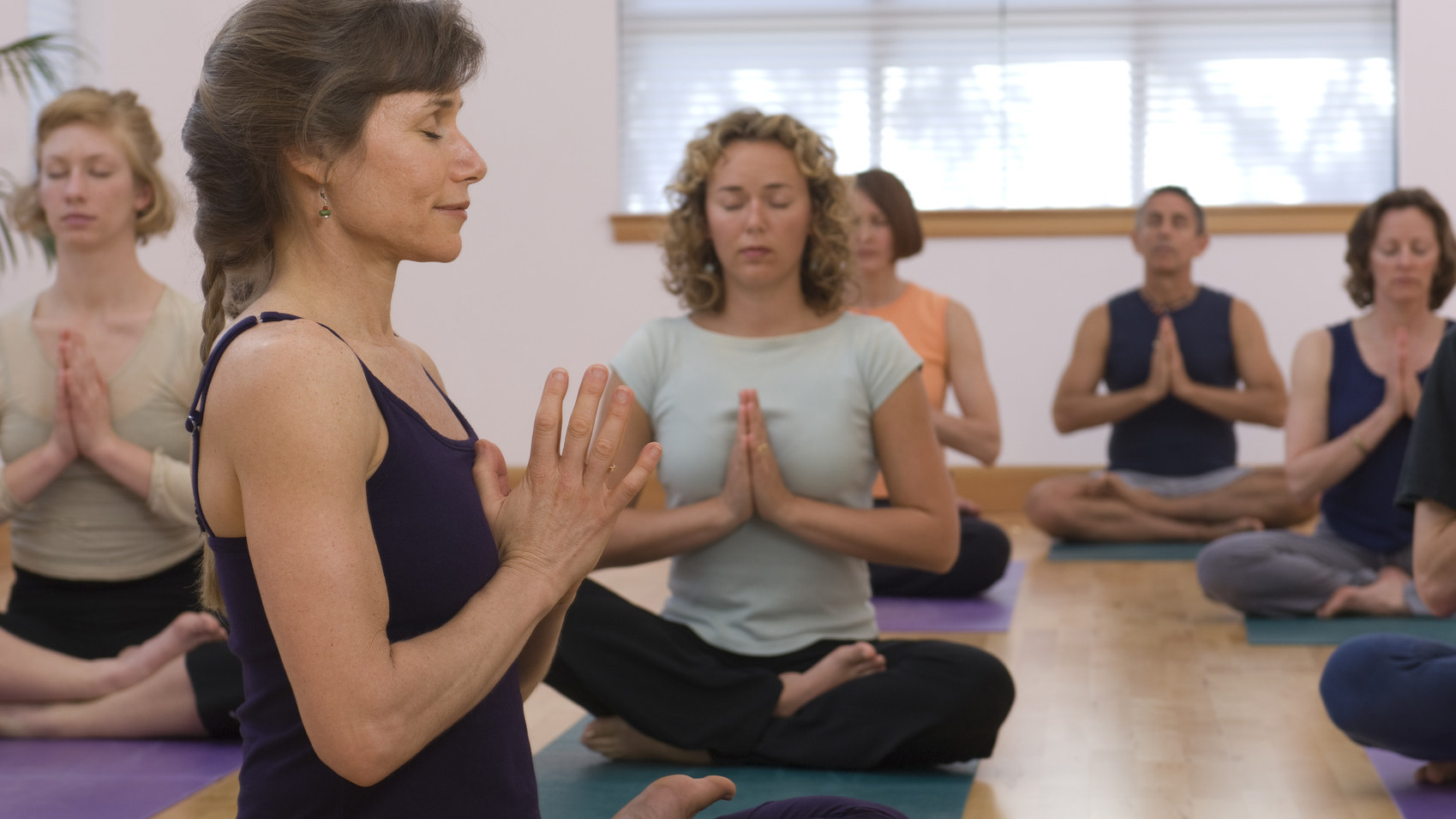View basket (0 items $0.00)

Yoga Focus and the Wandering Mind
What does it mean to be in a state of yoga?
With so much attention given to yoga’s postures, it’s easy to lose sight that yoga is ultimately about the quality and action of our focus, rather than our ability to bend in shapes or stand on our head. And it is through this stilled focus that we discover the pathway to experiencing more sustained joy, confidence and peace of mind. We uncover more of who we truly are.
“Yoga is the ability to harness the wandering mind by practicing complete focus toward harmony and clarity by the individual.” ~ The Yoga Sutras of Patanjali, verse 1.2
What is Yoga Focus?
Without the action of conscious focus, our minds will unconsciously wander. Science now refers to this as the Default Mode Network. This Default Mode Network is skilled at helping us unconsciously manufacture misery by creating fears, worries or uncertainties that don’t actually exist in this very moment.
The future and the past only exist in our minds. And how we think and feel about the past and future will often influence what we do, or don’t do, in the here and now.
The Yoga Sutras of Patanjali, a foundational text of yoga, teach us that the suffering (different than pain) we experience is a symptom of numerous misperceptions created by the mind. It goes on to share that the ultimate cause of dis-ease is our lack of understanding about who we truly are and our separateness from our true selves. Thoughts we focus on with feeling become our experience of life. This works in both the positive and negative realms.
For example, through the lens of yoga, habitual anxiety is created by the mind. We experience it as sensations in the body, but the chain of anxiety begins in the mind. If we were to take an honest inventory of our thinking, we’d likely uncover a longstanding focus or attachment to fear-based and stressful thoughts and beliefs that set the anxiety in motion.
When we focus on something long enough or with intensity, it produces an emotion in us, and that emotion puts us (and life) in motion to create. Life cannot NOT create. And life “out there” is a reflection of what life is within us.
That is why no two people see anything in the exact same way. We live in a reflective universe, which is responding to or mirroring our inner processes, individually and collectively. So focus, or attention becomes a central theme in yoga because it has creative power.
What Do You Link With?
The word yoga can be translated as “to link with.” As the Buddha taught, we become what we link with (or think) because we experience life as we are, not as it is. Thoughts are not who we are, but they can shape our experience.
If you close your eyes and bring your attention to something that upsets you, you’ll eventually begin to feel upset. The same is true if you close your eyes and bring your focus toward a happy memory; you’ll find yourself feeling happiness. 
Have you ever spent time with a negative person or group? When you link with them, it’s easy to become negative yourself. The same is true if you spend time with positive people or groups; you’ll eventually begin to feel more optimistic.
This is one of the reasons certain lineages of the yoga tradition encourage community. It is a powerful pillar for growth and fulfilment. When you find a positive community or study group, you’ll also discover that you increase your capacity for happiness and confidence. A like-minded community can inspire you and keep you accountable to your own truth.
And when you’re really ready to experience more of what you want in life, whether that be joy, success, love, confidence, courage, serenity and so on, you have to get skilled at focusing on it. You need to learn to focus in a new and positive way, even when circumstances present something other than what you want right now.
How Reality Can Change
When we find ourselves in conditions we don’t like, those conditions are often a result of what we’ve focused on or believed so far. But those beliefs, and therefore our reality, can change. In fact, in the second chapter of The Yoga Sutras, we’re taught that although our reality is our reality right now, with a continuous and enthusiastic practice of new focus, sustained commitment and emotional intention, our reality can change in the direction we desire.
Why? Because reality is coming from us, not at us.
The Yoga Sutras also tell us that yoga is experiential. We can’t only read about these teachings. We must seek out our own application of them because it’s through our experience that we truly come to understand and receive the benefits.
So, for a moment, think about one of your dominant thoughts or beliefs. Is it positive or negative? Is it taking you closer to what you want in life, or away from it? Do you feel liberated or trapped as a result of this belief?
Next, think back over the last five years of your life. Can you notice if this belief has contributed to common patterns in your lifestyle, relationship, career, friendships, ambitions, esteem or what you believe you can or can't do or accomplish?
Imagine a Positive Reality
Just like an apple seed can only produce an apple tree, the same is true of our thoughts. We can’t experience sustained joy and happiness when our dominant story is of lack, fear and doubt. The action of positive focus, which is part of yoga, is like a lasso for a wandering mind.
Think of a positive shift you want to make in life. It can be anything. Let go of doubt and step into possibility. Yoga calls this sraddha. For the next 30 days, focus as if it is already done. Yoga calls this abhyasa.
Don’t worry about the how or why of it. Let go of any need for a strategy. Just focus on the feeling of it being completed and manifested. It is key to get into the feeling sense of it. Yoga calls this bhavana.
Imagining it done is a keen action of focus, one that is taught in The Yoga Sutras. Again, imagine how you feel knowing it is done.
The Yoga Sutras tell us that the more we visualize our goal—with feeling—the nearer we are to it, the more real it feels, and the more clarity and faith we will develop. Set aside five minutes or more a day to settle the mind and imagine this vision of yours.
Now, to help you stay focused, create a positive statement or mantra. Make your affirmation in the present tense and make it personal. You can start by creating the opposite of negative thought.
Google “positive“ or “abundance” adjectives to help you complete the following statements. Repeat your statement several times every day to retrain and rewire your thinking. Repeat it whenever the old ideas come to mind. Use it to replace and release negative thinking as it arises.
Complete one or more of the following statements to help you create a positive mantra/affirmation:
I am …
I have …
Life is …
I release …
I allow...
Practice this meditation daily as part of your routine to connect with the quiet place within.
Study with YogaUOnline and Yasmin Lambat - BodySensing: Intuitive Yoga for Myofascial Release.
Reprinted with permission from JoyStoneCoaching.com
 Joy Stone is an experienced and certified Yoga Teacher and Personal Transformation Coach. She is also the founder of Soul Subscription – a holistic online membership designed to help you stay consistent on your spiritual path and true to yourself. With over 13 years of professional experience, she is passionate about helping men and women break free from fear, frustration and overwhelm and breakthrough into a life they truly love. Joy's special style of coaching uniquely blends the most essential tools & life-empowering practices from eastern and western psychology & philosophy. She received her positive psychology education under Harvard Professor, Tal Ben-Shahar, Wholebeing Institute and her yoga teaching certification under the Anusara style -- a therapeutic application of yoga psychology and practice. You can learn more about Joy and her work at www.joystonecoaching.com
Joy Stone is an experienced and certified Yoga Teacher and Personal Transformation Coach. She is also the founder of Soul Subscription – a holistic online membership designed to help you stay consistent on your spiritual path and true to yourself. With over 13 years of professional experience, she is passionate about helping men and women break free from fear, frustration and overwhelm and breakthrough into a life they truly love. Joy's special style of coaching uniquely blends the most essential tools & life-empowering practices from eastern and western psychology & philosophy. She received her positive psychology education under Harvard Professor, Tal Ben-Shahar, Wholebeing Institute and her yoga teaching certification under the Anusara style -- a therapeutic application of yoga psychology and practice. You can learn more about Joy and her work at www.joystonecoaching.com
Featured Courses








